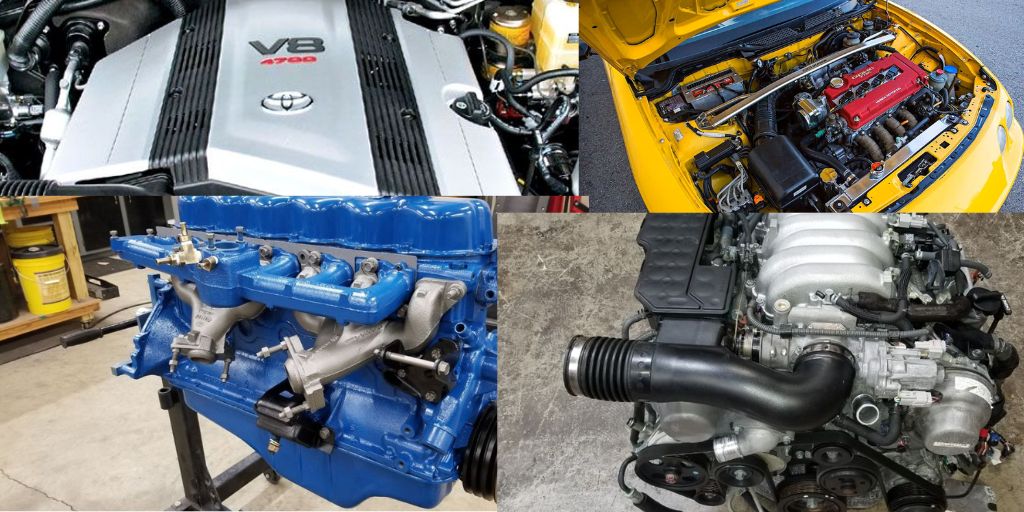When it comes to choosing a vehicle, the engine is arguably the most important component. A well-built, durable engine can provide hundreds of thousands of miles of reliable service, while a poorly designed engine can turn into an expensive nightmare.
Whether you’re buying new or used, understanding which engines have proven themselves and which are known for catastrophic failures can save you a lot of money, time, and frustration.
In this article, we’ll cover 5 Engines You Can Count On, celebrated for their longevity, durability, and low maintenance requirements. These engines have built reputations for staying strong even under high mileage and less-than-ideal conditions.
Then, we’ll shift gears and look at 5 Engines That Are Ticking Time Bombs, known for their mechanical flaws, design oversights, and unexpected breakdowns. These engines often burden owners with costly repairs and premature failures, sometimes making them vehicles to avoid entirely.
By the end, you’ll have a clearer picture of which engines deliver true peace of mind — and which ones might leave you stranded on the side of the road. Whether you’re car shopping or just a car enthusiast, this list is packed with insights to help you make smarter automotive choices.
Also Read: 5 Cars With Reliable Transmissions and 5 That Constantly Fail
5 Engines You Can Count On
When people talk about vehicles that last forever, they’re usually talking about more than just a solid frame or good suspension — they’re talking about the engine. A reliable engine is the heart of a dependable vehicle.
It’s the part that, if properly maintained, can keep running strong for hundreds of thousands of miles without needing a major rebuild or replacement. While modern engines are more complex than ever, there are still a handful of legendary powerplants that have proven to be nearly bulletproof over decades of real-world use.
In this section, we’ll highlight 5 engines that have earned reputations for reliability, efficiency, and long-term durability. These engines aren’t just flukes either — they’ve been tested by millions of drivers across the world under every imaginable driving condition.
Whether you’re looking for a solid commuter car, a dependable family hauler, or a workhorse truck, knowing which engines can be trusted is critical for making a smart investment.
We’ll look into the engineering behind these successes: things like simple, proven designs, high-quality materials, and manufacturing processes that minimize defects. These engines didn’t just become reliable by accident — they were built with longevity in mind. Many of these powerplants are so dependable that they often outlive the vehicle they’re installed in!
Whether you’re considering a used vehicle or just curious about what makes some engines legendary while others fail prematurely, this list is designed to give you a clear sense of which engines you can truly count on. So let’s get into the five engines that continue to deliver reliable performance year after year.
1. Toyota 2UZ-FE 4.7L V8
When it comes to bulletproof engines, the Toyota 2UZ-FE 4.7L V8 stands tall among the greats. Found in vehicles like the Toyota Land Cruiser, Sequoia, and Tundra, this engine has built a reputation for running hundreds of thousands of miles with minimal trouble.
Originally introduced in the late 1990s, the 2UZ-FE was designed to prioritize reliability and durability over cutting-edge performance, and that focus paid off big time.
The 2UZ-FE uses a cast-iron block, which adds extra strength compared to lighter aluminum blocks found in many modern engines. It’s also equipped with a conservative, under-stressed design: Toyota didn’t push the engine to its limits with high compression or turbocharging.
Instead, it delivers smooth, predictable power that’s perfectly suited for heavy-duty work and long-distance driving. This “overbuilt” nature is a key reason why so many 2UZ-FEs are still running strong with 300,000 or even 400,000 miles on the odometer.
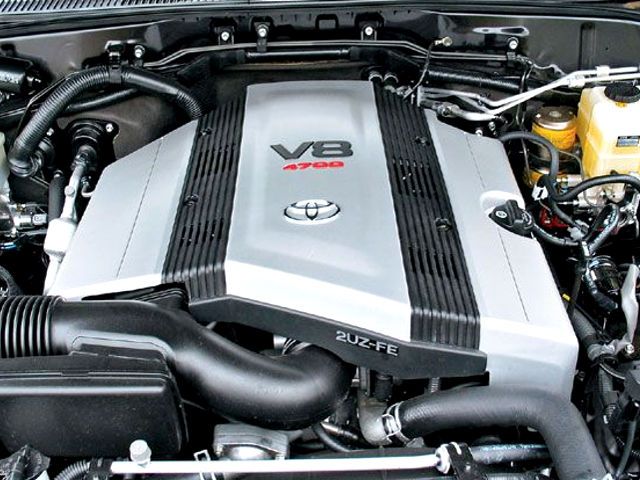
Another factor contributing to its legendary status is simplicity. The 2UZ-FE doesn’t rely on overly complex electronics or advanced variable valve timing in its earlier years, meaning fewer things that can go wrong. Regular oil changes, basic maintenance, and proper cooling system upkeep are usually enough to keep these engines humming along for decades.
I chose to highlight the 2UZ-FE because it’s a perfect example of what happens when an automaker focuses on longevity instead of chasing trends. This engine is beloved not only by Toyota enthusiasts but also by overlanders, fleet operators, and anyone else who values dependable, no-nonsense engineering. If you’re looking for a reliable used truck or SUV, a model powered by the 2UZ-FE should be at the top of your list.
2. Honda K20/K24 Series (2.0L and 2.4L Inline-4)
Honda’s K-Series engines, particularly the K20 and K24 variants, are legendary for their bulletproof reliability and impressive versatility. Found in everything from the Honda Civic Si and Accord to the CR-V and Element, these engines have proven themselves capable of lasting 250,000 to 300,000 miles — and sometimes even more — with basic maintenance. When you hear people say “Honda makes engines that never die,” the K-Series is usually a big reason why.
What makes the K20 and K24 so special is their exceptional balance of efficiency, durability, and power. These engines feature strong aluminum blocks with cast-in iron cylinder liners, forged steel connecting rods, and high-revving dual overhead cams.
They also incorporate Honda’s VTEC (Variable Valve Timing and Lift Electronic Control) system, which adds performance without sacrificing long-term reliability. Importantly, Honda engineered the K-Series with precise tolerances and top-notch materials, reducing wear over time.
Owners praise the K-Series for its ability to tolerate high RPMs, heat, and even occasional maintenance neglect without catastrophic failure. Even turbocharged aftermarket builds of the K20/K24 can handle significant boost with minimal internal modifications — a testament to just how tough these engines are at their core.
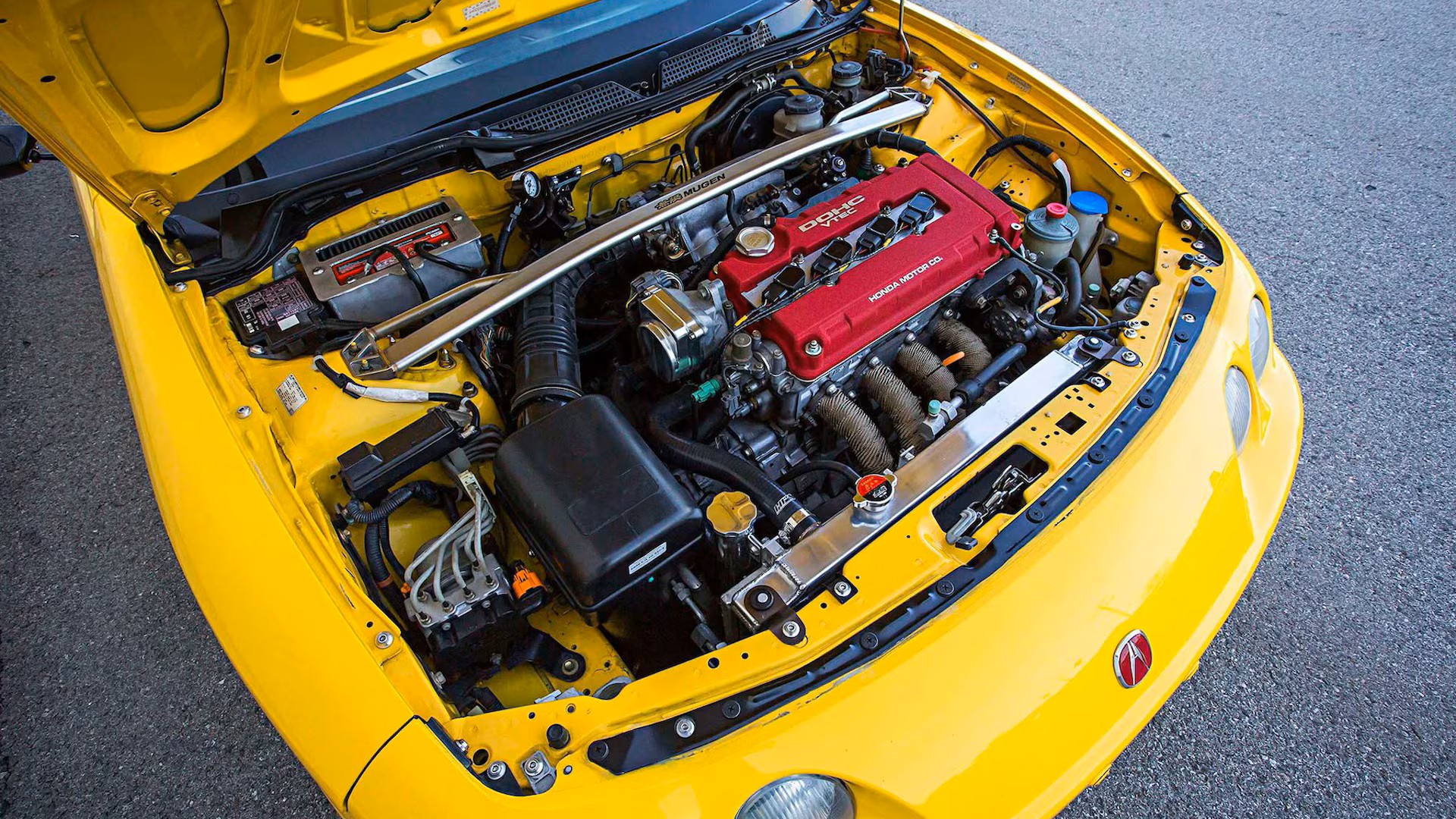
I’m highlighting the Honda K20/K24 here because they represent the gold standard for naturally aspirated four-cylinders. These engines are so robust that they’re frequently swapped into performance cars, race cars, and project builds simply because enthusiasts know they can trust them.
Whether you need a daily driver, a tuner platform, or a weekend road trip car, an engine from the K-Series family is a rock-solid choice you can count on for the long haul.
3. Ford 4.9L Inline-6 (300 CID)
If there’s one word that sums up the Ford 4.9L Inline-6 engine, it’s indestructible. Produced from the mid-1960s through the mid-1990s, and famously found in Ford trucks like the F-150 and F-250, this engine earned a cult following among mechanics, farmers, and fleet operators alike. Known internally as the 300 CID (cubic inch displacement), this motor is one of the most trusted workhorse engines America has ever built.
The 4.9L’s strength lies in its simplicity. It’s an old-school overhead valve (OHV) engine with a cast-iron block and head, extremely sturdy internals, and very few moving parts compared to modern engines.
There’s no turbocharging, no high-strung electronics, and no complex variable valve timing to worry about. Maintenance is straightforward — think oil changes, tune-ups, and the occasional timing chain replacement — and it’s forgiving even when maintenance is spotty.
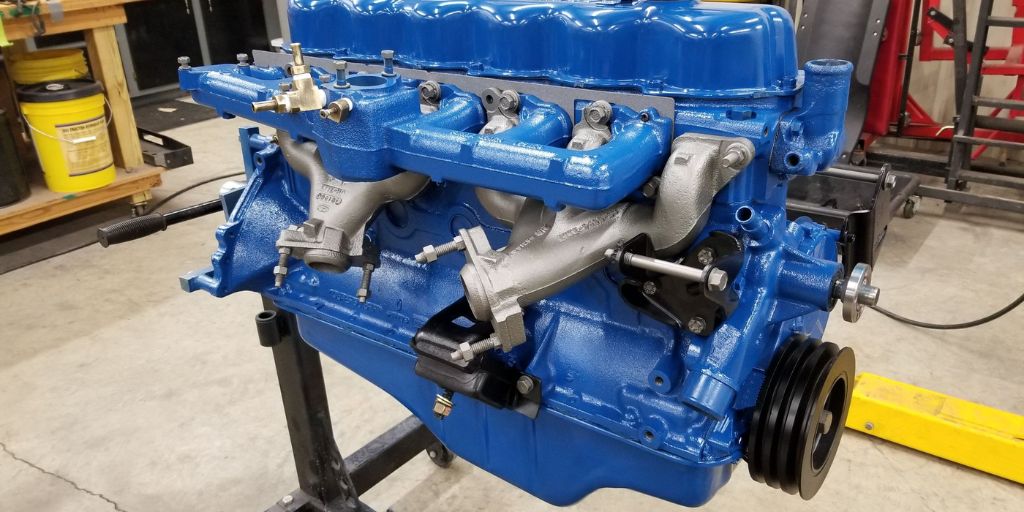
Another reason for its legendary reliability is the engine’s design: the long-stroke, heavy-duty construction provides excellent low-end torque while keeping RPMs low, which reduces internal stress. It was built to work hard, pull heavy loads, and survive endless idling without complaint — exactly what you want in a pickup or a utility vehicle.
I chose to feature the 4.9L Inline-6 because it’s a classic example of an engine that simply refuses to die. Even today, it’s not uncommon to find these motors still chugging along with well over 400,000 miles, often with their original internals intact.
For anyone considering a used Ford truck from this era, a 4.9L-equipped model should inspire a lot of confidence. This engine didn’t just meet expectations — it often exceeded them by outlasting the vehicle around it.
4. Lexus 1UZ-FE 4.0L V8
If you’re looking for an engine that combines luxury, performance, and rock-solid reliability, the Lexus 1UZ-FE 4.0L V8 is in a class of its own. Introduced in the late 1980s with the Lexus LS400, the 1UZ-FE was Toyota’s bold statement to the world that it could build a luxury car — and a luxury engine — that could match or beat anything coming out of Germany at the time. Not only did they succeed, but they also created one of the most durable V8 engines ever made.
The 1UZ-FE features an all-aluminum block and heads, a forged steel crankshaft, six-bolt main bearings, and extremely tight engineering tolerances. Everything about this engine was overbuilt for strength and smoothness. It’s not unusual for a well-maintained 1UZ-FE to surpass 400,000 miles with minimal internal repairs, a rare feat for a high-end V8.
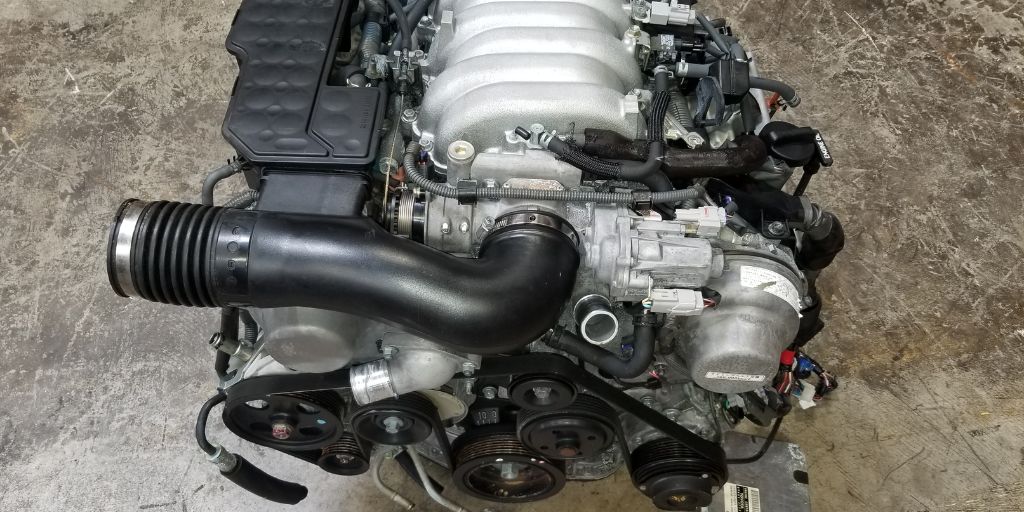
Another strength is the engine’s ability to run quietly and smoothly even after decades of use. It’s known for resisting common failure points like oil leaks, cooling system issues, and valve train problems. Many owners report that the engine often outlasts the car’s electronics, body, and suspension components, proving how well it was engineered.
I’m highlighting the 1UZ-FE here because it’s an icon of reliable engineering hidden inside what many people mistakenly think are just old luxury cars. In reality, the LS400 and other 1UZ-equipped models are incredible bargains on the used market for those seeking serious long-term reliability.
Whether you’re chasing a classic luxury cruiser or need a solid swap candidate for a project build, the 1UZ-FE is the kind of engine you can trust for the long haul — and enjoy every mile along the way.
5. Chevrolet LS3 6.2L V8
The Chevrolet LS3 6.2L V8 is a modern masterpiece of performance, reliability, and durability. Found in cars like the Corvette C6, Camaro SS, and various high-performance GM vehicles, the LS3 is part of GM’s legendary LS family of engines — a family that’s built a reputation for being nearly indestructible when properly maintained.
What makes the LS3 so dependable is its straightforward but strong design. It features a lightweight aluminum block paired with high-strength internals like a forged steel crankshaft and hyper-eutectic pistons.
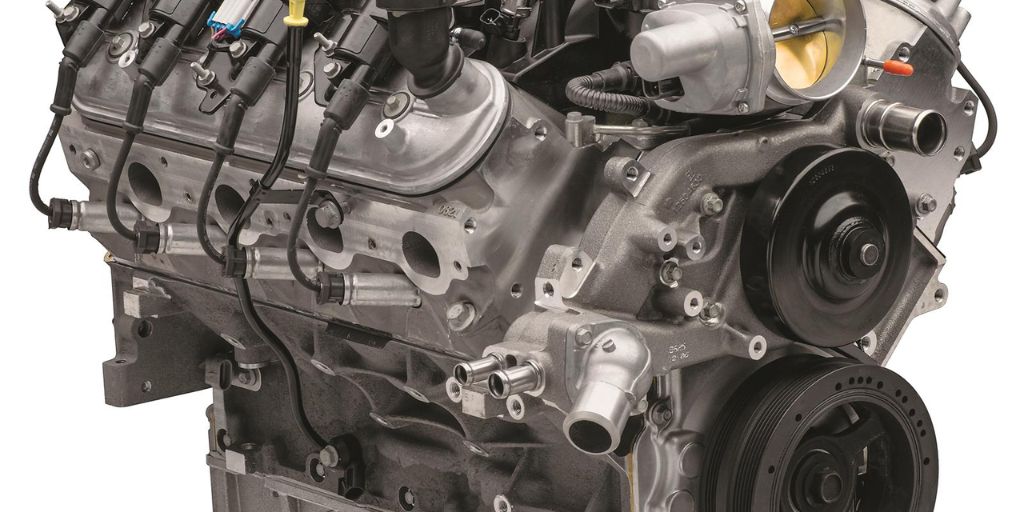
It’s naturally aspirated, meaning there’s no turbo or supercharger to add extra strain, and it benefits from decades of GM’s refinement of pushrod V8 architecture. Despite producing over 400 horsepower, the LS3 is tuned conservatively enough that it rarely stresses itself under normal driving conditions.
Beyond its physical durability, the LS3 is also renowned for being extremely simple to work on. Whether you’re changing oil, replacing spark plugs, or performing a full rebuild, the LS engine family is designed with accessibility in mind. Parts are widely available and relatively inexpensive, making repairs and maintenance much less painful over the long term.
I’m featuring the LS3 here because it’s not just an engine you can count on — it’s an engine people build entire projects around. Whether in muscle cars, trucks, or engine swaps into classic cars, the LS3 delivers unbeatable longevity combined with thrilling performance.
Owners often rack up 200,000+ miles without major internal issues, a remarkable feat for a high-horsepower performance motor. If you’re looking for something that offers daily-driver reliability and weekend thrills, the LS3 is one of the best modern engines you can bet on.
5 That Are Ticking Time Bombs
While some engines earn their reputation for longevity, others unfortunately become infamous for doing the exact opposite. Whether it’s due to poor design, cheap materials, overheating problems, or just overall bad engineering, some engines are practically a gamble from the moment you drive off the lot.
These engines might run fine for a while, but many owners discover that around a certain mileage, catastrophic failures like blown head gaskets, oil consumption, timing chain failures, or even complete engine breakdowns are almost inevitable.
In this section, we’ll dive into 5 engines that have gained a reputation for being ticking time bombs — engines you definitely want to avoid unless you’re prepared for major repair bills.
These are motors that often looked great on paper but fell apart in the real world, costing unsuspecting owners thousands in repairs or even forcing complete engine replacements. Sometimes it’s because of over-complicated technology that wasn’t ready for prime time; other times it’s just the result of manufacturers cutting corners to save costs.
Choosing a car based on looks, features, or brand alone can be risky if you don’t know what’s under the hood. That’s why it’s important to know which engines have well-documented reliability issues before making a purchase — especially if you’re buying used.
Each of the engines we’re about to discuss had high hopes when they were introduced but quickly proved themselves to be liabilities. I’ll explain exactly what went wrong with each one and why they’re best avoided if you value your time, wallet, and sanity.
Get ready — these engines might seem fine for the first few years, but under the surface, they’re ticking away toward expensive problems.
1. Subaru EJ25 2.5L Flat-Four (1996–2010 Models)
The Subaru EJ25 engine, especially the versions produced from the late ’90s through the 2000s, has sadly become one of the most infamous “ticking time bombs” in the automotive world.
On paper, it sounds promising: a 2.5-liter horizontally opposed (“boxer”) four-cylinder offering a low center of gravity and solid power for its size. In reality, however, this engine developed a long list of persistent, expensive issues that have frustrated owners for decades.
The most notorious problem with the EJ25 is its chronic head gasket failures. The gaskets tend to leak coolant and oil, often externally, leading to overheating and serious internal engine damage if not caught early.
While some improvements were made over the years, the early Phase I and Phase II EJ25s (found in models like the Subaru Outback, Legacy, Forester, and Impreza) are especially vulnerable. Head gasket jobs are labor-intensive and costly, often exceeding $2,000 — and that’s if you catch it before more damage is done.
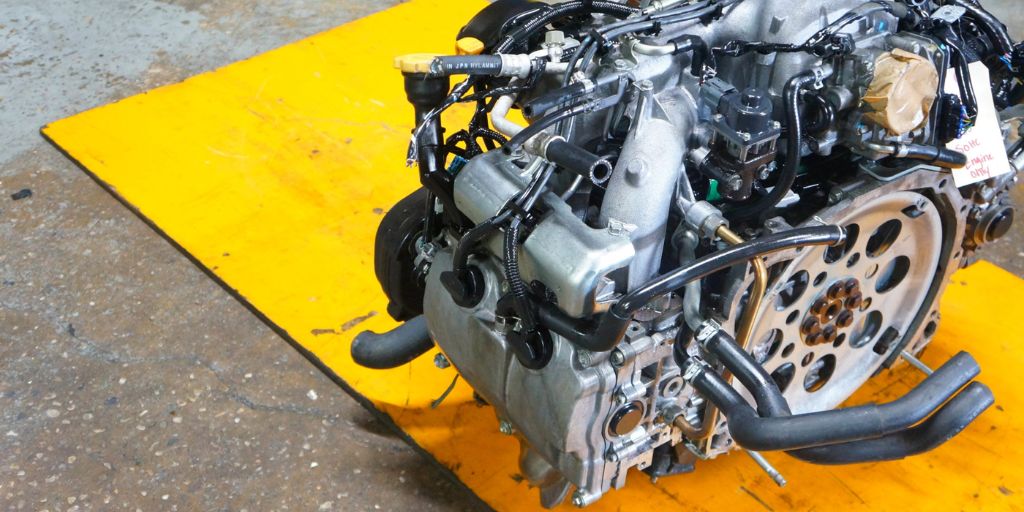
But that’s not all. The EJ25 also has a reputation for oil consumption, piston slap (a knocking noise caused by wear inside the cylinders), and sometimes even rod bearing failures in higher mileage or poorly maintained examples. These problems mean even routine driving can lead to expensive surprises if the engine isn’t meticulously maintained.
I’m featuring the Subaru EJ25 here because it perfectly illustrates the dangers of buying a car without understanding its mechanical history. These engines can seem fine for the first 80,000 to 100,000 miles, but often, major issues start creeping in right around that point.
Unless you’re buying one with documented head gasket repairs and a flawless maintenance record, owning an EJ25-powered Subaru can quickly turn from fun to financially painful.
2. Chrysler 2.7L V6 (1998–2010 Models)
The Chrysler 2.7L V6 is another engine that looked promising on paper but turned out to be a complete nightmare in real-world ownership. Installed in vehicles like the Chrysler Sebring, Dodge Intrepid, and Dodge Stratus, this engine was designed to offer smooth performance and decent fuel economy.
Unfortunately, it became notorious for catastrophic failures — often before reaching 100,000 miles — making it one of the worst modern engines in terms of longevity and repair costs.
The biggest problem with the 2.7L V6 is its sludge buildup. Due to a combination of poor internal oil flow design, a small oil sump, and high operating temperatures, sludge (a thick, tar-like deposit) would quickly form inside the engine if oil changes weren’t done religiously.
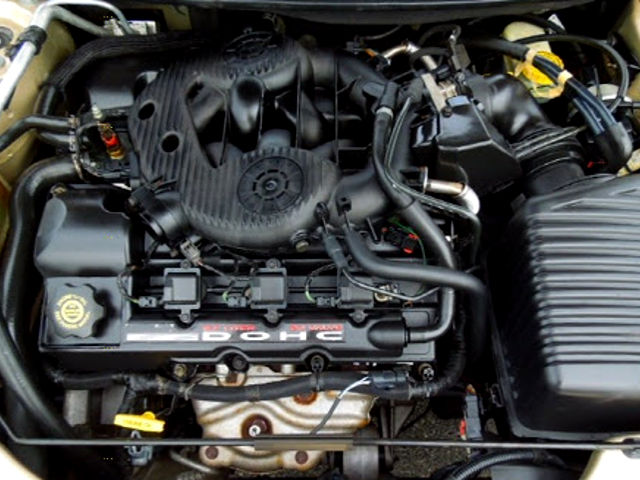
Once sludge develops, it restricts oil flow to critical areas like the timing chain and camshafts, leading to timing chain failures, catastrophic overheating, and seized engines.
Another major weakness is the timing chain tensioner. If the tensioner fails — which is common because of oil starvation caused by sludge — the timing chain can jump, ruining the engine in an instant.
I’m featuring the Chrysler 2.7L V6 here because it’s one of the clearest examples of an engine where the average owner didn’t stand a chance. Even with strict maintenance, many owners still faced early failures.
If you ever find a used car with a Chrysler 2.7 under the hood, the best advice is simple: walk away. Between sludge-related engine death, expensive repairs, and poor resale value, this engine is more trouble than it’s worth.
It’s a cautionary tale about how critical good engine design — and oil system engineering — truly is when it comes to building a reliable powerplant.
3. BMW N54 3.0L Inline-6 Turbo (2006–2013 Models)
The BMW N54 engine was initially hailed as a high-performance marvel, offering great power and refinement in vehicles like the 335i, 135i, and X6. However, as time went on, it became apparent that the N54 was also a ticking time bomb for anyone who wasn’t prepared for its maintenance and repair needs. The N54’s combination of performance and turbocharging created an engine that, despite its impressive specs, was far from reliable in the long term.
One of the major issues with the N54 engine is its high-pressure fuel pump (HPFP), which was prone to failure in many early models. A failure of this pump could leave you stranded, with no simple solution short of replacing the pump entirely. The issue was so prevalent that BMW eventually extended warranties on the HPFP, but many owners still had to deal with the frustration and cost of repeated failures.
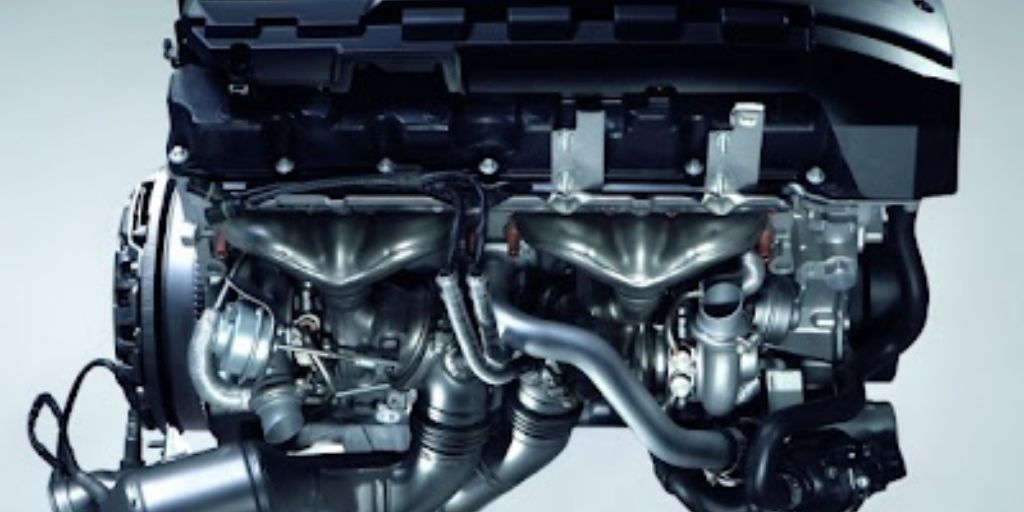
The N54 is also notorious for turbocharger failure. The turbos used in this engine, while powerful, weren’t designed for long-term durability under the constant stress of high boost. Over time, they could develop oil leaks, boost pressure issues, or complete failure. The cost to replace both turbos can easily exceed $5,000, making the repair far more expensive than most owners expect.
Another common issue is carbon buildup on the intake valves, which is typical of direct-injection engines. This buildup can cause misfires, rough idle, and a significant loss in power. Cleaning the valves is a labor-intensive job, and if neglected, can lead to further damage to engine components.
I’m featuring the BMW N54 because, while it’s capable of delivering thrilling performance, it comes with a significant risk of costly and frequent repairs. If you’re considering a used BMW with this engine, be prepared for regular maintenance or the possibility of major repairs sooner rather than later. This is definitely not an engine you want to drive without knowing its full repair history.
4. Ford 4.6L Triton V8 (1997–2008 Models)
The Ford 4.6L Triton V8, found in everything from the Ford F-150 to the Lincoln Town Car, has a mixed reputation. While it certainly has its fair share of reliable, long-lasting examples, it also has an equally notorious history of serious mechanical failures that make it a ticking time bomb in many Ford trucks and SUVs.
One of the most infamous issues with the 4.6L Triton V8 is its spark plug blow-out problem. In certain years of this engine, the spark plugs could fail to stay properly threaded in the cylinder head, causing them to blow out.
This wasn’t just a minor inconvenience; the blowouts often resulted in damage to the cylinder head and expensive repairs, sometimes requiring a new head altogether. If the engine had already suffered one spark plug blowout, other cylinders might be prone to the same fate, increasing the repair bill.
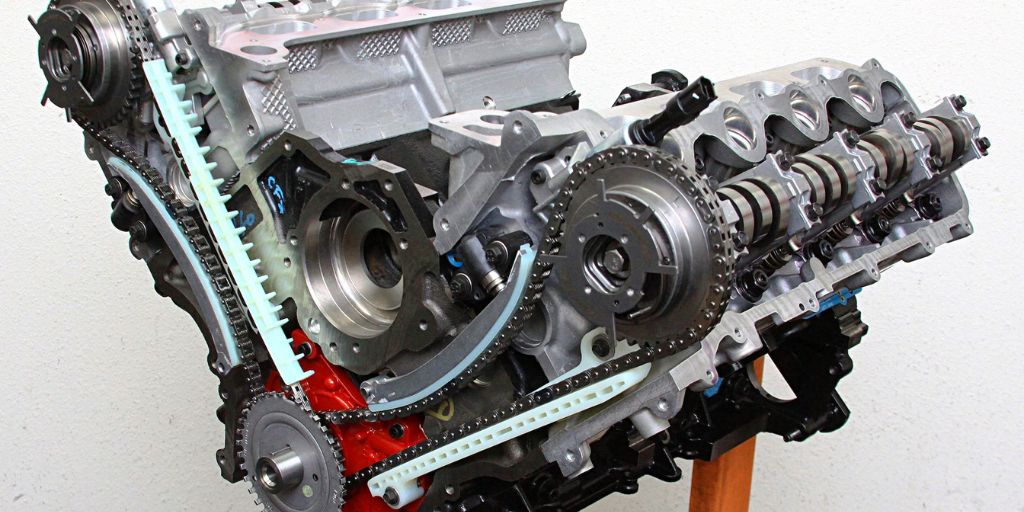
The engine’s timing chain and timing chain tensioners are also problematic. Over time, these components can wear prematurely, resulting in timing issues, engine misfires, and even catastrophic engine damage if the timing chain were to fail completely.
The costs of replacing these parts, especially if the engine suffers additional damage due to a failure, can easily top $2,000 or more.
Furthermore, the Ford 4.6L Triton V8 suffered from poor oil flow in certain versions, leading to excessive wear on the engine internals. This problem often resulted in early engine wear and could cause the engine to fail before it hit 150,000 miles in some cases.
I’m highlighting the Ford 4.6L Triton V8 here because it represents the kind of engine that seems like a solid, dependable choice at first, but reveals hidden issues as it ages. While it’s certainly capable of lasting a long time with proper maintenance, the potential for serious, costly failures makes it a risky proposition for used car buyers, especially those unaware of its weak points.
5. Audi 2.0T FSI (2005–2011 Models)
The Audi 2.0T FSI (Fuel Stratified Injection) engine was initially a promising powerhouse, offering a balance of performance and efficiency in a variety of Audi models, including the A4, A5, and the Volkswagen GTI.
However, this seemingly reliable four-cylinder turbocharged engine became one of the most problematic powerplants in Audi’s lineup, with a reputation for being a ticking time bomb that can cause serious issues after just a few years of ownership.
One of the most well-known problems with the 2.0T FSI is carbon buildup on the intake valves. The direct injection system, while efficient, doesn’t clean the intake valves in the same way as older port-injection systems, leading to a thick buildup of carbon deposits.
Over time, this buildup can cause misfires, loss of power, and a rough idle, significantly degrading the engine’s performance. In severe cases, owners have reported the need for expensive walnut blasting to clean the intake valves — a procedure that can cost over $500.
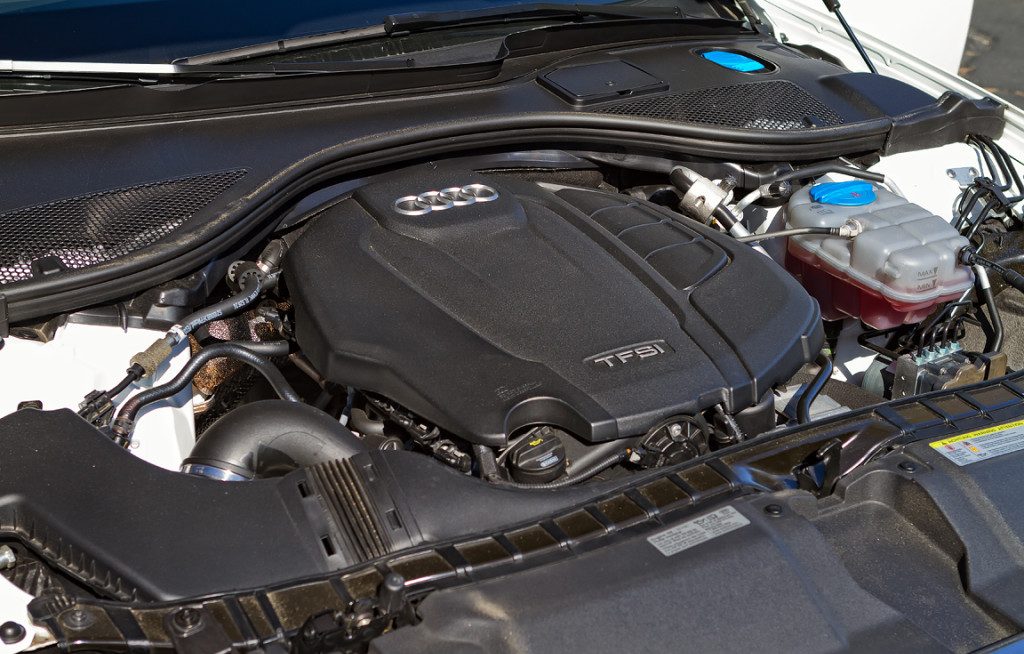
Another critical issue with the 2.0T FSI engine is timing chain tensioner failures. The timing chain tensioner on this engine is prone to wear, which can result in catastrophic engine damage if the chain skips a tooth or the tensioner fails completely.
This issue typically leads to engine misfires, rough running, or, in the worst case, a completely ruined engine. The cost to replace the timing chain tensioner and associated components can easily run into the thousands, making it one of the most expensive repairs for this engine.
Finally, the 2.0T FSI is also prone to high oil consumption. Owners often find that their engines burn through oil at an alarming rate, leading to low oil levels and potential damage to the turbocharger and other engine components.
The Audi 2.0T FSI engine is an example of an engine that promises much but often under-delivers in the long run. While it provides great performance initially, the reliability issues with this engine — from carbon buildup to timing chain failures — mean that it’s a major gamble for anyone looking to buy a used Audi or Volkswagen with this engine under the hood.
The cost of repairs, combined with the risk of sudden failure, make this engine a ticking time bomb for owners who aren’t prepared to spend the money on keeping it running smoothly.
When it comes to selecting an engine, reliability is often the deciding factor between a vehicle that provides years of hassle-free service and one that will cause constant headaches. In this comparison of 5 engines you can count on versus 5 that are ticking time bombs, we’ve highlighted the importance of understanding an engine’s history and design before making a purchase — especially if you plan to buy used.
Engines like the Toyota 2.5L I4, Honda 3.5L V6, and Chevrolet LS3 represent some of the best examples of long-lasting, well-engineered powertrains. These engines are known for their durability and ability to rack up high mileage with minimal issues.
They’re designed with simplicity and reliability in mind, making them less prone to catastrophic failures. The owners of these engines can often count on low-cost maintenance and long-term performance, ensuring they get the most value out of their investment.
On the other hand, engines like the Subaru EJ25, Chrysler 2.7L V6, and BMW N54 are cautionary tales. While they might perform well in the early years of ownership, these engines are plagued by design flaws and high-risk failure points that can result in expensive repairs and short engine lifespans.
Whether it’s due to problematic fuel systems, poor oil flow, or design oversights, these engines have earned a reputation for being ticking time bombs — seemingly reliable at first, but quickly revealing their flaws after a few years of use.
Ultimately, when purchasing a used car or considering long-term vehicle ownership, it’s crucial to look beyond the initial appeal of a car’s specs and instead focus on its engine’s reliability.
Understanding which engines are built to last and which are prone to failure can save you time, money, and frustration in the long run. Prioritize those that have earned a reputation for durability, and avoid the ones that are known for blowing up before their time.
Also Read: 5 Cars With Legendary Reliability and 5 Known Lemons

